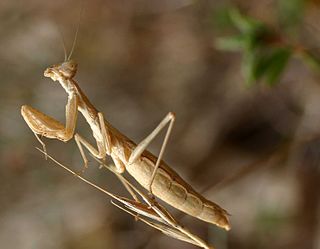
Herring are forage fish, mostly belonging to the family of Clupeidae.

The macaques constitute a genus (Macaca) of gregarious Old World monkeys of the subfamily Cercopithecinae. The 23 species of macaques inhabit ranges throughout Asia, North Africa, and Europe. Macaques are principally frugivorous, although their diet also includes seeds, leaves, flowers, and tree bark. Some species such as the long-tailed macaque will supplement their diets with small amounts of meat from shellfish, insects, and small mammals. On average, a southern pig-tailed macaque in Malaysia eats about 70 large rats each year. All macaque social groups are arranged around dominant matriarchs.

The guenons are Old World monkeys of the genus Cercopithecus. Not all members of this genus have the word "guenon" in their common names; also, because of changes in scientific classification, some monkeys in other genera may have common names that include the word "guenon". Nonetheless, the use of the term guenon for monkeys of this genus is widely accepted.

Elisabeth Sara "Elly" Ameling is a Dutch soprano, who is particularly known for lieder recitals and for performing works by Johann Sebastian Bach. Performing with distinguished pianists and ensembles around the globe, she was awarded various honours and recording prizes.

Wobbegong is the common name given to the 12 species of carpet sharks in the family Orectolobidae. They are found in shallow temperate and tropical waters of the western Pacific Ocean and eastern Indian Ocean, chiefly around Australia and Indonesia, although one species occurs as far north as Japan. The word wobbegong is believed to come from an Australian Aboriginal language, meaning "shaggy beard", referring to the growths around the mouth of the shark of the western Pacific.
A near-threatened species is a species which has been categorized as "Near Threatened" (NT) by the International Union for Conservation of Nature (IUCN) as that may be vulnerable to endangerment in the near future, but it does not currently qualify for the threatened status.

An IUCN Red List Critically Endangered species is one that has been categorized by the International Union for Conservation of Nature as facing an extremely high risk of extinction in the wild. As of December 2023, of the 157,190 species currently on the IUCN Red List, 9,760 of those are listed as Critically Endangered, with 1,302 being possibly extinct and 67 possibly extinct in the wild.

The wildlife of Tunisia is composed of its flora and fauna. It has 84 species of mammals and 375 species of birds. Tunisia is well documented for its addax and dama gazelle population.

The serow, is any of four species of medium-sized goat-like or antelope-like mammals in the genus Capricornis. All four species of serow were, until recently, classified under Naemorhedus, which now only contains the gorals.

Ameles decolor is a species of small praying mantis native to the west Mediterranean and North Africa. A. decolor was first described by entomologist Domenico Cyrillo in 1787, and its current classification was established in 1976 by Karl Harz and Alfred Peter Kaltenbach. A. decolor presents as a small, light brown mantis with females tending to appear larger than their male counterparts. The mating patterns of A. decolor are considered some of the most complex amongst praying mantises, with males presenting two different styles of courtship. Their habitat favours shrublands, grasslands, and wooded areas.

Ameles spallanzania, common name European dwarf mantis, is a species of praying mantis.
The spined dwarf mantis is an extinct species of praying mantis that was endemic to Italy.
Amele is a Papuan language of Papua New Guinea. Dialects are Huar, Jagahala and Haija.
The limbless fine-lined slider is a species of skink found in Queensland in Australia.











